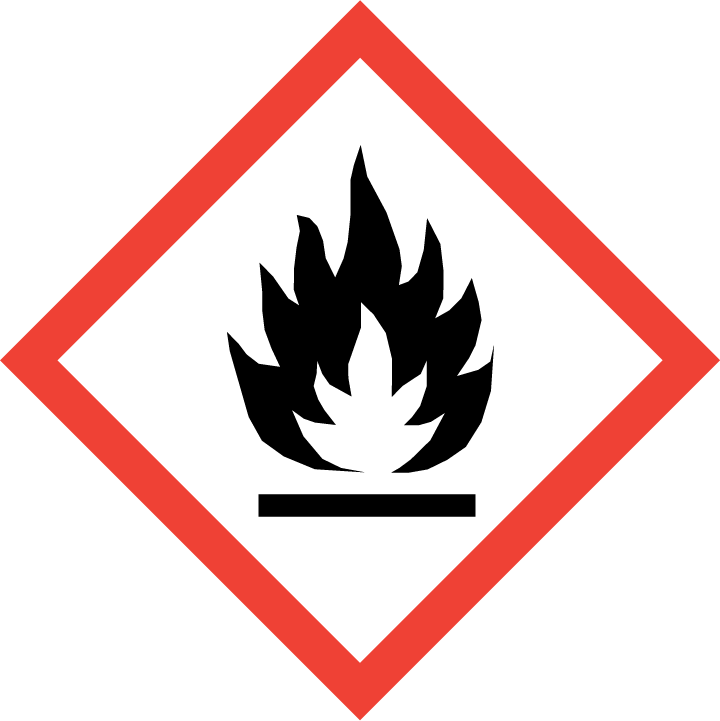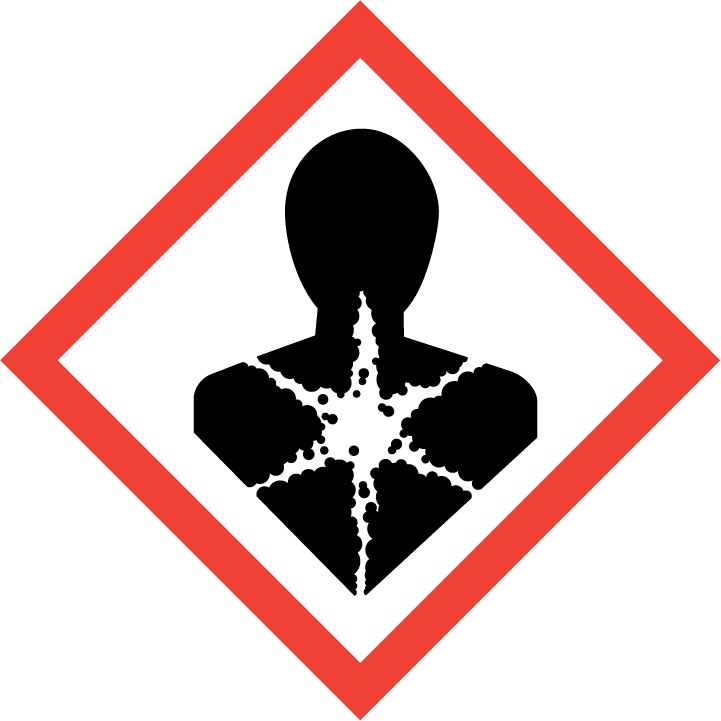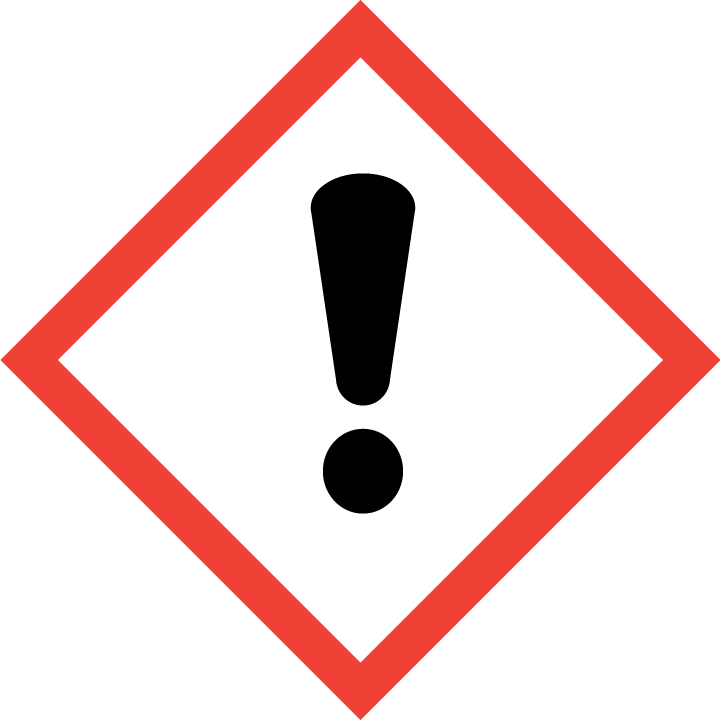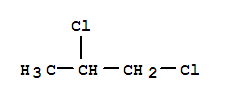1.Identification
1.1 GHS Product identifier
| Product name | 1,2-dichloropropane |
|---|
1.2 Other means of identification
| Product number | - |
|---|---|
| Other names | 1,2-Dichloropropane |
1.3 Recommended use of the chemical and restrictions on use
| Identified uses | For industry use only. Volatile organic compounds |
|---|---|
| Uses advised against | no data available |
1.4 Supplier's details
1.5 Emergency phone number
| Emergency phone number | - |
|---|---|
| Service hours | Monday to Friday, 9am-5pm (Standard time zone: UTC/GMT +8 hours). |
2.Hazard identification
2.1 Classification of the substance or mixture
Flammable liquids, Category 2
Acute toxicity - Oral, Category 4
Acute toxicity - Inhalation, Category 4
Carcinogenicity, Category 1B
2.2 GHS label elements, including precautionary statements
| Pictogram(s) |    |
|---|---|
| Signal word | Danger |
| Hazard statement(s) | H225 Highly flammable liquid and vapour H302 Harmful if swallowed H332 Harmful if inhaled H350 May cause cancer |
| Precautionary statement(s) | |
| Prevention | P210 Keep away from heat, hot surfaces, sparks, open flames and other ignition sources. No smoking. P233 Keep container tightly closed. P240 Ground and bond container and receiving equipment. P241 Use explosion-proof [electrical/ventilating/lighting/...] equipment. P242 Use non-sparking tools. P243 Take action to prevent static discharges. P280 Wear protective gloves/protective clothing/eye protection/face protection. P264 Wash ... thoroughly after handling. P270 Do not eat, drink or smoke when using this product. P261 Avoid breathing dust/fume/gas/mist/vapours/spray. P271 Use only outdoors or in a well-ventilated area. P201 Obtain special instructions before use. P202 Do not handle until all safety precautions have been read and understood. |
| Response | P303+P361+P353 IF ON SKIN (or hair): Take off immediately all contaminated clothing. Rinse skin with water [or shower]. P370+P378 In case of fire: Use ... to extinguish. P301+P312 IF SWALLOWED: Call a POISON CENTER/doctor/…if you feel unwell. P330 Rinse mouth. P304+P340 IF INHALED: Remove person to fresh air and keep comfortable for breathing. P312 Call a POISON CENTER/doctor/…if you feel unwell. P308+P313 IF exposed or concerned: Get medical advice/ attention. |
| Storage | P403+P235 Store in a well-ventilated place. Keep cool. P405 Store locked up. |
| Disposal | P501 Dispose of contents/container to ... |
2.3 Other hazards which do not result in classification
none
3.Composition/information on ingredients
3.1 Substances
| Chemical name | Common names and synonyms | CAS number | EC number | Concentration |
|---|---|---|---|---|
| 1,2-dichloropropane | 1,2-dichloropropane | 78-87-5 | none | 100% |
4.First-aid measures
4.1 Description of necessary first-aid measures
General advice
Consult a physician. Show this safety data sheet to the doctor in attendance.
If inhaled
Fresh air, rest. Refer for medical attention.
In case of skin contact
Rinse and then wash skin with water and soap. Refer for medical attention .
In case of eye contact
First rinse with plenty of water for several minutes (remove contact lenses if easily possible), then refer for medical attention.
If swallowed
Rinse mouth. Refer for medical attention . Do NOT induce vomiting.
4.2 Most important symptoms/effects, acute and delayed
Contact with skin or eyes may cause irriation. (USCG, 1999)
4.3 Indication of immediate medical attention and special treatment needed, if necessary
Basic treatment: Establish a patent airway. Suction if necessary. Watch for signs of respiratory insufficiency and assist ventilations if necessary. Administer oxygen by nonrebreather mask at 10 to 15 L/min. Monitor for pulmonary edema and treat if necessary ... . For eye contamination, flush eyes immediately with water. Irrigate each eye continuously with normal saline during transport ... . Do not use emetics. For ingestion, rinse mouth and administer 5 ml/kg up to 200 ml of water for dilution if the patient can swallow, has a strong gag reflex, and does not drool. Administer activated charcoal ... . Cover skin burns with dry sterile dressings after decontamination ... . /Dichloropropane, dichloropropene, and related compounds/
5.Fire-fighting measures
5.1 Extinguishing media
Suitable extinguishing media
Excerpt from ERG Guide 130 [Flammable Liquids (Water-Immiscible / Noxious)]: CAUTION: All these products have a very low flash point: Use of water spray when fighting fire may be inefficient. SMALL FIRE: Dry chemical, CO2, water spray or regular foam. LARGE FIRE: Water spray, fog or regular foam. Do not use straight streams. Move containers from fire area if you can do it without risk. FIRE INVOLVING TANKS OR CAR/TRAILER LOADS: Fight fire from maximum distance or use unmanned hose holders or monitor nozzles. Cool containers with flooding quantities of water until well after fire is out. Withdraw immediately in case of rising sound from venting safety devices or discoloration of tank. ALWAYS stay away from tanks engulfed in fire. For massive fire, use unmanned hose holders or monitor nozzles; if this is impossible, withdraw from area and let fire burn. (ERG, 2016)
5.2 Specific hazards arising from the chemical
Special Hazards of Combustion Products: Toxic and irritating gases may be generated. (USCG, 1999)
5.3 Special protective actions for fire-fighters
Wear self-contained breathing apparatus for firefighting if necessary.
6.Accidental release measures
6.1 Personal precautions, protective equipment and emergency procedures
Use personal protective equipment. Avoid dust formation. Avoid breathing vapours, mist or gas. Ensure adequate ventilation. Evacuate personnel to safe areas. Avoid breathing dust. For personal protection see section 8.
6.2 Environmental precautions
Remove all ignition sources. Personal protection: self-contained breathing apparatus. Ventilation. Do NOT wash away into sewer. Collect leaking and spilled liquid in sealable containers as far as possible. Absorb remaining liquid in sand or inert absorbent. Then store and dispose of according to local regulations.
6.3 Methods and materials for containment and cleaning up
1. Remove all ignition sources. 2. Ventilate area of spill or leak. 3. For small quantities, absorb on paper towels. Evaporate in a safe place (such as a fume hood). Allow sufficient time for evaporating vapors to completely clear the hood ductwork. Burn the paper in a suitable location away from combustible materials. Large quantities can be collected & atomized in a suitable combustion chamber equipped with an appropriate effluent gas cleaning device. Propylene dichloride should not be allowed to enter a confined space, such as a sewer, because of the possibility of an explosion.
7.Handling and storage
7.1 Precautions for safe handling
Avoid contact with skin and eyes. Avoid formation of dust and aerosols. Avoid exposure - obtain special instructions before use.Provide appropriate exhaust ventilation at places where dust is formed. For precautions see section 2.2.
7.2 Conditions for safe storage, including any incompatibilities
Fireproof. Provision to contain effluent from fire extinguishing. Store in an area without drain or sewer access.
8.Exposure controls/personal protection
8.1 Control parameters
Occupational Exposure limit values
NIOSH considers propylene dichloride to be a potential occupational carcinogen.
NIOSH usually recommends that occupational exposures to carcinogens be limited to the lowest feasible concentration.
Biological limit values
no data available
8.2 Appropriate engineering controls
Handle in accordance with good industrial hygiene and safety practice. Wash hands before breaks and at the end of workday.
8.3 Individual protection measures, such as personal protective equipment (PPE)
Eye/face protection
Safety glasses with side-shields conforming to EN166. Use equipment for eye protection tested and approved under appropriate government standards such as NIOSH (US) or EN 166(EU).
Skin protection
Wear impervious clothing. The type of protective equipment must be selected according to the concentration and amount of the dangerous substance at the specific workplace. Handle with gloves. Gloves must be inspected prior to use. Use proper glove removal technique(without touching glove's outer surface) to avoid skin contact with this product. Dispose of contaminated gloves after use in accordance with applicable laws and good laboratory practices. Wash and dry hands. The selected protective gloves have to satisfy the specifications of EU Directive 89/686/EEC and the standard EN 374 derived from it.
Respiratory protection
Wear dust mask when handling large quantities.
Thermal hazards
no data available
9.Physical and chemical properties
| Physical state | COLOURLESS LIQUID , WITH CHARACTERISTIC ODOUR. |
|---|---|
| Colour | Colorless liquid |
| Odour | Sweet |
| Melting point/ freezing point | 202°C(lit.) |
| Boiling point or initial boiling point and boiling range | 97°C |
| Flammability | Class IB Flammable Liquid: Fl.P. below 22.78°C and BP at or above 37.78°C.Highly flammable. Heating will cause rise in pressure with risk of bursting. Gives off irritating or toxic fumes (or gases) in a fire. |
| Lower and upper explosion limit / flammability limit | Lower flammable limit: 3.4% by volume; Upper flammable limit: 14.5% by volume |
| Flash point | 14°C(lit.) |
| Auto-ignition temperature | 557.22°C (USCG, 1999) |
| Decomposition temperature | no data available |
| pH | no data available |
| Kinematic viscosity | no data available |
| Solubility | In water:3 g/L (20 oC) |
| Partition coefficient n-octanol/water (log value) | no data available |
| Vapour pressure | 40 mm Hg ( 19.4 °C) |
| Density and/or relative density | 1.1558 |
| Relative vapour density | 3.89 (vs air) |
| Particle characteristics | no data available |
10.Stability and reactivity
10.1 Reactivity
no data available
10.2 Chemical stability
Sensitive to heat.
10.3 Possibility of hazardous reactions
DESPITE LOW FLASH POINT IT DOES NOT CATCH FIRE READILY IN INDUSTRIAL APPLICATIONS.The vapour is heavier than air and may travel along the ground; distant ignition possible.1,2-DICHLOROPROPANE reacts with strong oxidizers and strong acids. It also reacts with aluminum. When confined, this reaction can lead to an explosion. It is incompatible with bases and aluminum alloys. It will attack some forms of plastics, rubber and coatings.
10.4 Conditions to avoid
no data available
10.5 Incompatible materials
Contact with ... strong acids may cause decomposition. ... With strong oxidizing agents may cause fires or explosions.
10.6 Hazardous decomposition products
When heated to decomposition it emits toxic fumes of /hydrogen chloride/.
11.Toxicological information
Acute toxicity
- Oral: LDf50 Guinea pig oral 2000-4000 mg/kg
- Inhalation: LC50 Mouse inhalation 720 ppm/10 hr
- Dermal: no data available
Skin corrosion/irritation
no data available
Serious eye damage/irritation
no data available
Respiratory or skin sensitization
no data available
Germ cell mutagenicity
no data available
Carcinogenicity
Evaluation: No epidemiological data relevant to the carcinogenicity of 1,2-dichloropropane were available. There is limited evidence in experimental animals for the carcinogenicity of 1,2-dichloropropane. Overall evaluation: 1,2-Dichloropropane is not classifiable as to its carcinogenicity to humans (Group 3).
Reproductive toxicity
A case was reported of a woman who was hospitalized with metrorrhagia (bleeding from the uterus between menstrual periods) after acute inhalation exposure to propylene dichloride. No other information is available on the reproductive or developmental effects of propylene dichloride in humans. No reproductive effects were noted in several animal inhalation studies. Developmental effects, such as an increased incidence of delayed ossification of the bones of the skull, and reproductive effects such as testicular degeneration and increased incidences of infection of the ovary, uterus, or other organs, have been observed in animals exposed to propylene dichloride by gavage (experimentally placing the chemical in the stomach). It is not known if the infections observed were related to propylene dichloride treatment since controls were also infected.
STOT-single exposure
no data available
STOT-repeated exposure
no data available
Aspiration hazard
no data available
12.Ecological information
12.1 Toxicity
- Toxicity to fish: LC50 Lepomis macrochirus 320 ppm/96 hr; In fresh water at 23°C, mild aeration applied after 24 hr
- Toxicity to daphnia and other aquatic invertebrates: LC50 Daphnia magna (cladorecan) 52,500 ug/l/96 hr
- Toxicity to algae: no data available
- Toxicity to microorganisms: no data available
12.2 Persistence and degradability
Partial chemical oxidation of biorefractory cmpds by ozone treatment prior to biological oxidation was studied. 1,2-Dichloropropane is not biodegradable, but it can be made biodegradable with ozonation.
12.3 Bioaccumulative potential
BCF ranges of 1.2-3.2 and 0.5-6.9 were measured for 1,2-dichloropropane at concns of 0.4 mg/l and 0.04 mg/l, respectively(1). According to a classification scheme(2), these BCF values suggest bioconcentration in aquatic organisms is low(SRC).
12.4 Mobility in soil
The Koc for 1,2-dichloropropane is 47 in a silt loam(1). According to a classification scheme(2), this Koc value suggests that 1,2-dichloropropane is expected to have high mobility in soil. It sorbs to clay minerals in dry soil but desorbs as the soil absorbs moisture(2). In the areas of the US where 1,2-dichloropropane was used as a fumigant, the soil is generally sandy with low organic carbon content and would probably have little impact on reducing mobility due to soil adsorption(2).
12.5 Other adverse effects
no data available
13.Disposal considerations
13.1 Disposal methods
Product
The material can be disposed of by removal to a licensed chemical destruction plant or by controlled incineration with flue gas scrubbing. Do not contaminate water, foodstuffs, feed or seed by storage or disposal. Do not discharge to sewer systems.
Contaminated packaging
Containers can be triply rinsed (or equivalent) and offered for recycling or reconditioning. Alternatively, the packaging can be punctured to make it unusable for other purposes and then be disposed of in a sanitary landfill. Controlled incineration with flue gas scrubbing is possible for combustible packaging materials.
14.Transport information
14.1 UN Number
| ADR/RID: UN1279 | IMDG: UN1279 | IATA: UN1279 |
14.2 UN Proper Shipping Name
| ADR/RID: 1,2-DICHLOROPROPANE |
| IMDG: 1,2-DICHLOROPROPANE |
| IATA: 1,2-DICHLOROPROPANE |
14.3 Transport hazard class(es)
| ADR/RID: 3 | IMDG: 3 | IATA: 3 |
14.4 Packing group, if applicable
| ADR/RID: II | IMDG: II | IATA: II |
14.5 Environmental hazards
| ADR/RID: no | IMDG: no | IATA: no |
14.6 Special precautions for user
no data available
14.7 Transport in bulk according to Annex II of MARPOL 73/78 and the IBC Code
no data available
15.Regulatory information
15.1 Safety, health and environmental regulations specific for the product in question
| Chemical name | Common names and synonyms | CAS number | EC number |
|---|---|---|---|
| 1,2-dichloropropane | 1,2-dichloropropane | 78-87-5 | none |
| European Inventory of Existing Commercial Chemical Substances (EINECS) | Listed. | ||
| EC Inventory | Listed. | ||
| United States Toxic Substances Control Act (TSCA) Inventory | Listed. | ||
| China Catalog of Hazardous chemicals 2015 | Listed. | ||
| New Zealand Inventory of Chemicals (NZIoC) | Listed. | ||
| Philippines Inventory of Chemicals and Chemical Substances (PICCS) | Listed. | ||
| Vietnam National Chemical Inventory | Not Listed. | ||
| Chinese Chemical Inventory of Existing Chemical Substances (China IECSC) | Listed. | ||
16.Other information
Information on revision
| Creation Date | Aug 12, 2017 |
|---|---|
| Revision Date | Aug 12, 2017 |
Abbreviations and acronyms
- CAS: Chemical Abstracts Service
- ADR: European Agreement concerning the International Carriage of Dangerous Goods by Road
- RID: Regulation concerning the International Carriage of Dangerous Goods by Rail
- IMDG: International Maritime Dangerous Goods
- IATA: International Air Transportation Association
- TWA: Time Weighted Average
- STEL: Short term exposure limit
- LC50: Lethal Concentration 50%
- LD50: Lethal Dose 50%
- EC50: Effective Concentration 50%
References
- IPCS - The International Chemical Safety Cards (ICSC), website: http://www.ilo.org/dyn/icsc/showcard.home
- HSDB - Hazardous Substances Data Bank, website: https://toxnet.nlm.nih.gov/newtoxnet/hsdb.htm
- IARC - International Agency for Research on Cancer, website: http://www.iarc.fr/
- eChemPortal - The Global Portal to Information on Chemical Substances by OECD, website: http://www.echemportal.org/echemportal/index?pageID=0&request_locale=en
- CAMEO Chemicals, website: http://cameochemicals.noaa.gov/search/simple
- ChemIDplus, website: http://chem.sis.nlm.nih.gov/chemidplus/chemidlite.jsp
- ERG - Emergency Response Guidebook by U.S. Department of Transportation, website: http://www.phmsa.dot.gov/hazmat/library/erg
- Germany GESTIS-database on hazard substance, website: http://www.dguv.de/ifa/gestis/gestis-stoffdatenbank/index-2.jsp
- ECHA - European Chemicals Agency, website: https://echa.europa.eu/


 F;
F; Xn;
Xn; T
T

